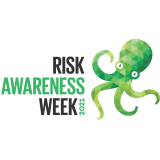This informal CPD article, ‘Why risk awareness and risk-based thinking are essential for decision-makers’ was provided by International Risk Services, who deliver quantitative risk management practices in a digestible and practical format.
If there's one thing that the pace of modern business has taught us, it's that the unexpected should be expected. From market shifts to sudden changes in technology or regulations, decision-makers have a lot on their plate. How do you prepare for challenges that you don't even know exist yet? Enter risk awareness and risk-based thinking, increasingly becoming core skills for leaders in today's complex business landscape.
A study from the Project Management Institute points out that projects are more likely to succeed in organizations with a robust risk-management culture (PMI, 2017). Moreover, a Harvard Business Review article notes that companies with a risk-based decision-making approach are better at adapting to change (HBR, 2019).
So, what does this mean for day-to-day operations in your business? One practical idea is to integrate risk analysis directly into the decision-making process. Before making a big move like entering a new market or launching a product, use tools like Monte Carlo simulations to predict a range of outcomes based on different variables. If you're making smaller decisions, a simplified decision tree can be of great help.
Risk Considerations
Another concrete step to take is to include risk considerations in your project management processes. For instance, before greenlighting a project, require a risk assessment as part of the initial planning stage. These risk assessments should weigh not just the negatives, but also the opportunities that come with each project option. This goes beyond a traditional SWOT analysis to add a layer of quantitative rigor to your decision-making.
But how do you get started with implementing such practices? Online educational platforms are now providing this much-needed training on risk awareness. Training should also be directed toward middle management, not just upper echelons of leadership.
A study from the Risk Management Society found that only 49% of middle managers have a complete understanding of their company’s risk write management objectives (RIMS, 2018). By educating middle management, companies can ensure that risk-based thinking becomes part of the organizational DNA, not just a top-down directive.
The need for risk awareness and risk-based thinking has never been greater. From leveraging tools like Monte Carlo simulations in strategic planning to requiring risk assessments in project management, these are skills that all decision-makers should master. As you ponder on this, you might find that resources like online workshops and educational platforms could be beneficial to upskill your team in these critical areas. Because when it comes to making decisions in this complex world, understanding and managing risk is more than just a safety net—it's a competitive advantage.
The key activities to include in your risk awareness strategy could be:
1. Risk Identification and Prioritization: Implement processes to identify and prioritize risks. Prioritize risks based on their potential effect on key business decisions, strategic objectives, and overall cash flow. Incorporate risk identification into your decision-making processes.
2. Integration with Decision-Making: Embed risk analysis into business decision-making processes. Instead of treating risk management as a standalone function, it should be integrated into strategic planning, investment decisions, and other important business activities.
3. Risk-Based Thinking Training: Provide training to decision makers on risk-based thinking. This is crucial to equip them with the necessary tools and knowledge to make informed decisions.
4. Dynamic KPIs: Replace traditional static KPIs with dynamic, risk-based range KPIs. These KPIs should reflect relevant risks and be integrated into your performance measurement and management control systems.
5. Strengthen Relationship with Strategic Planning: Establish a strong relationship with the strategic planning department. This will help ensure risk management is integrated into strategic planning, and that the insights from risk analysis are incorporated into strategy formulation.
6. Methodology Development: Develop specific risk analysis methodologies for different types of decisions, tailored to your company's unique decision-making processes.
7. Risk Management Committee: Establish a risk management committee, to enhance the risk culture and ensure effective risk management across all levels of the organization.
8. Risk Reporting and Communication: Implement a robust risk reporting and communication system. This is crucial to ensure that the right risk information is delivered to the right people at the right time.
We hope you found this article helpful. For more information from International Risk Services, please visit their CPD Member Directory page. Alternatively, you can go to the CPD Industry Hubs for more articles, courses and events relevant to your Continuing Professional Development requirements.













